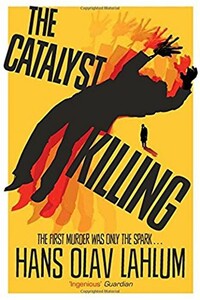Satellite People | страница 36
‘But something unexpected happened on Liberation Day itself, in which Magdalon Schelderup was involved,’ I probed. The Wendelboes exchanged fleeting glances before they nodded. But Petter Johannes Wendelboe’s voice was still calm when he continued.
‘It promises well for the investigation that you have already managed to unearth the story, though it can hardly have any connection to the murder today. It was a strange and tragic incident, but did not seem to cause Magdalon much concern afterwards. His explanation was reasonable enough and the guilty party was a mentally disturbed man, who gave an insane statement. So there was little doubt as to the outcome. But things like that are often a burden. And though I never heard Magdalon mention it later, I do think that it plagued him.’
I gave him a quizzical look, but he said nothing until I asked for further details.
‘Our group in the Resistance was small, but still had a dramatic and important history. We never had any more than six or seven members, and now that Magdalon is gone, my wife and I and Herlofsen are the only ones left alive. The group was established as early as winter 1940-41 and managed to carry on operating without being caught until Norway was liberated. Magdalon joined in summer 1941. He contacted me himself. It was a very difficult year. We lost a member in the spring and another in early autumn. Both were found shot dead in their own homes. The murderer was never found, either during or after the war. We have to this day simply called him the Dark Prince. He was given the name because he only fired in the dark of night, and no one ever saw him in daylight.’
I was fascinated, in part by the story and in part by the expressionless face and controlled voice with which Wendelboe told it.
‘For the remainder of the war, Magdalon and I and the other members of the group slept in rooms without windows, with the door locked. As I understood it, he continued to do this for many years, even though he was not a man who was easily scared. The Dark Prince never made another appearance after 1941 and we never found out whether he was a German or a Norwegian defector. During the war we believed and hoped that he was a German who had either been killed or left Norway, but afterwards we thought it was perhaps more likely that he had been a Norwegian. The modus operandi was not German. They generally came in uniform with dogs in the early morning. We hoped that maybe the Dark Prince was one of the Nasjonal Samling members we liquidated later. We suspected one of them. But we still do not even know if it was a man. I would dearly like to know for certain before I die who the Dark Prince was.’



